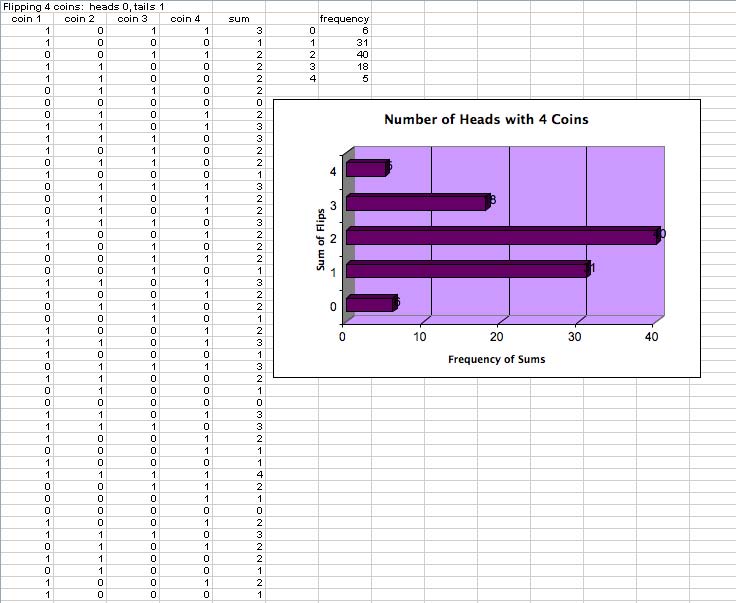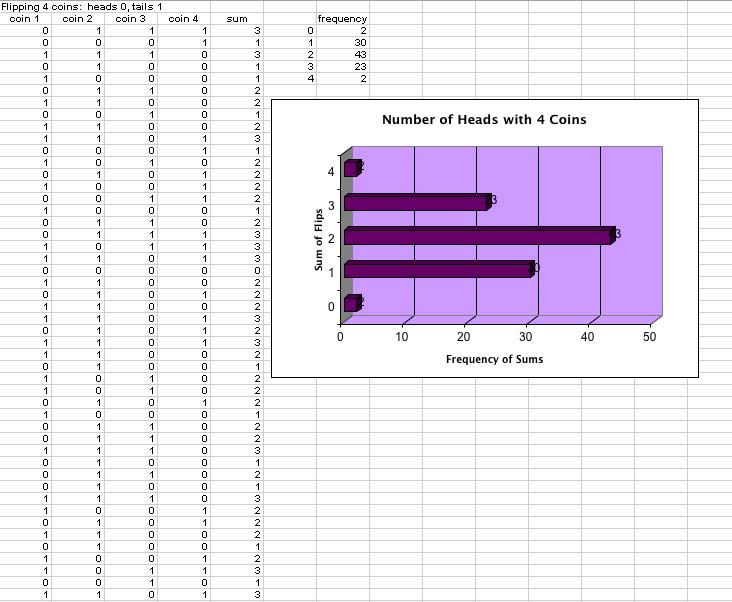
Probability of Getting 0 Heads:
Four Coins
My next experiment was to flip four coins, using Microsoft Excel to randomly select 0 or 1 100 times for four different coins, but I have only shown a few flips). I used the sum to find the frequency of how many times heads appeared. The possible sum outcomes were as follows: 0 + 0 + 0 + 0 = 0 (all coins landed on heads), 0 + 0 + 0 + 1(in no particular order) = 1 (three of the four coins landed on heads), 0 + 0 + 1 + 1 = 2 (two of the four coins landed on heads), 0 + 1 + 1 + 1(in no particular order) = 3 (one of the four coins landed on heads), or 1 + 1 + 1 + 1 = 1 (none of the four coins landed on heads). The spreadsheet shows the frequency of these possible outcomes: heads appeared on all four coins 6 out of 100 times (6%), heads appeared on three of the four coins 31 out of 100 times (31%), heads appeared on two of the four coins 40 out of 100 times (40%), heads appeared on one of the four coins 18 out of 100 times (18%), and heads did not appear at all 5 out of 100 times (5%).

Probability of Getting 0 Heads:
Empirical: .05
Theoretical: .0625
Probability of Getting 1 Head:
Empirical: .18
Theoretical: .25
Probability of Getting 2 Heads:
Empirical: .40
Theoretical: .375
Probability of Getting 3 Heads:
Empirical: .31
Theoretical: .25
Probability of Getting 4 Heads:
Empirical: .06
Theoretical: .0625
Let's look at another simulation of the same experiment:

Probability of Getting 0 Heads:
Empirical: .02
Theoretical: .0625
Probability of Getting 1 Head:
Empirical: .23
Theoretical: .25
Probability of Getting 2 Heads:
Empirical: .43
Theoretical: .375
Probability of Getting 3 Heads:
Empirical: .30
Theoretical: .25
Probability of Getting 4 Heads:
Empirical: .02
Theoretical: .0625